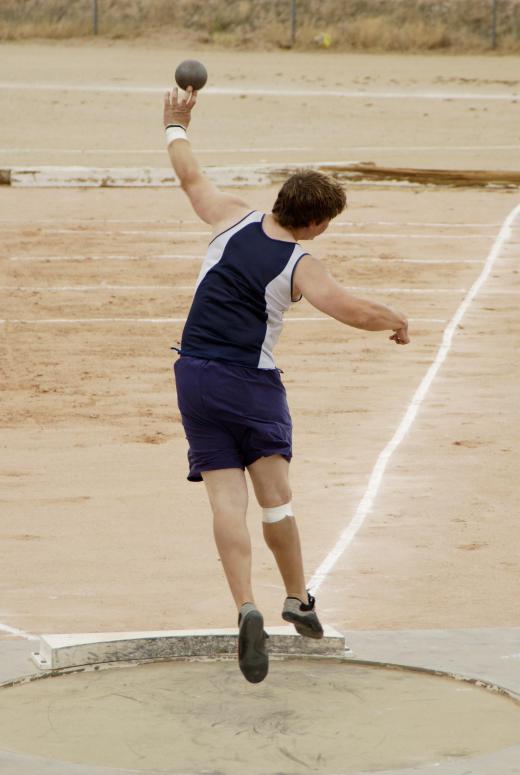Track spikes are special shoes that help runners grip the track, stay on course when making turns, and prevent injury on wet or slippery surfaces. They create traction between the runner's foot and the track itself. The actual spikes are pointed pieces of metal that are screwed into the bottom of the shoes with a special tool called a spike wrench. The metal spikes typically come in various lengths, depending upon the type of running or jumping that they are to be used for. When they break or become dull, the metal spikes can be removed and replaced with new ones.
Track spikes are usually worn during competitions, but not during training. During warm-ups and practice drills, regular running shoes are normally worn to prevent unnecessary wear on the track spikes. While runners do not have to wear spikes, many track coaches recommend them because they can help keep the feet in proper position and help athletes run in the best form possible. Throwers, or athletes who compete in shot put or discus, sometimes do wear their spikes while they train so they can perfect their form and avoid wearing out regular shoes during rigorous workouts. Track athletes do not usually need a different pair of track spikes for each event, although long distance spikes may offer more cushion, stability, and traction than those designed for sprinters, which are extremely light weight and built for speed.

Track spike shoes should fit rather snugly, but not tight. They commonly run slightly narrower and smaller than regular running shoes. Many athletes will purchase spike shoes a half size larger than their normal shoe size for this reason. Track spikes usually come in men's sizes, so women sometimes buy a half size smaller than their usual ladies size. It is typically best if track spikes are fitted at a running specialty store with the help of a salesperson who is knowledgeable about running shoes. Track shoes normally need to be worn with thin socks that are the proper size and have a constructed heel, as opposed to bulky tube socks.

The actual metal spikes have universally designed threads that are screwed into the bottom of the shoes, so any brand of spikes can fit any type of shoe. A spike wrench that comes with the shoes is used to install and tighten each spike by turning it in a clockwise motion. Removing the spikes is done in the same way, except by using a counter-clockwise motion. The spike wrench is operated in much the same way as a regular wrench, although a household wrench is not usually recommended for track spikes.
